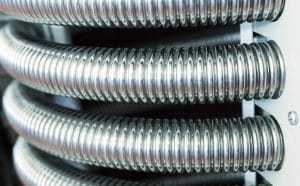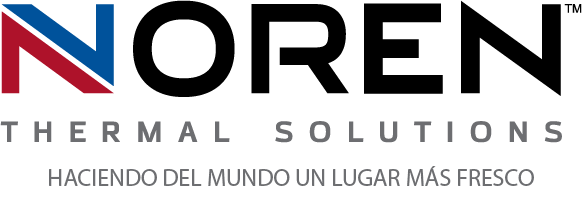 When companies seek to streamline their electrical thermal management processes, some of the most important considerations tend to focus on overall efficiency and productivity. Traditional cooling solutions can be a lot to keep up with, particularly due to a frequent need for maintenance and unscheduled repairs. However, after streamlining their electrical cooling systems with modern options, like heat exchangers, companies find that the advantages of doing so extend further than they may have realized at first. Thanks to their more innovative ways of transferring waste heat, they also make thermal management significantly more cost-effective in several areas.
When companies seek to streamline their electrical thermal management processes, some of the most important considerations tend to focus on overall efficiency and productivity. Traditional cooling solutions can be a lot to keep up with, particularly due to a frequent need for maintenance and unscheduled repairs. However, after streamlining their electrical cooling systems with modern options, like heat exchangers, companies find that the advantages of doing so extend further than they may have realized at first. Thanks to their more innovative ways of transferring waste heat, they also make thermal management significantly more cost-effective in several areas.
What is the heat transfer process?
The biggest difference between heat exchangers and more traditional electrical cooling systems is the manner in which they keep electrical enclosures cool. Older systems like air conditioners and air compression units were the traditional go-to cooling solution, and relied on the use of chilled air to maintain adequately low temperatures within most electrical enclosures. By contrast, heat exchangers are designed to use minimal energy and an eco-friendly cooling fluid to more directly collect and transfer waste heat outside of the enclosure. This process not only saves substantial amounts of energy, but also requires more easily sustainable methods and more efficient, reliable equipment.
Heat exchangers compared to other solutions
The many different advantages that companies experience thanks to heat exchangers stem largely from the different methods they use for electrical cooling. The most notable of these is energy usage, which can often be one of the biggest items in a company’s operating budget. Because heat exchangers don’t need to rely on chilled air to prevent overheating, they don’t require as much energy to operate continuously. Instead, many of the heat transfer processes they utilize are largely self-sustaining, such as phase-change cooling with an eco-friendly cooling fluid (like water).
Expanded cost-savings of heat exchangers
In addition to the significant amounts of energy that heat exchangers help companies save, their more streamlined methods of transferring heat also create several other important cost-efficiencies. For instance, because transferring heat doesn’t require chilled air or complicated mechanical equipment, heat exchangers can operate continuously and at optimal efficiency with little or no need for maintenance or repairs. Heat exchanger types such as heat pipes and cold plates allow the cooling fluid to flow easily through them, and most units have no external moving parts aside from one or more fans.
For more information about how cost-effective heat exchangers can be, call Noren Thermal Solutions in Taylor, TX, at 866-936-6736.







